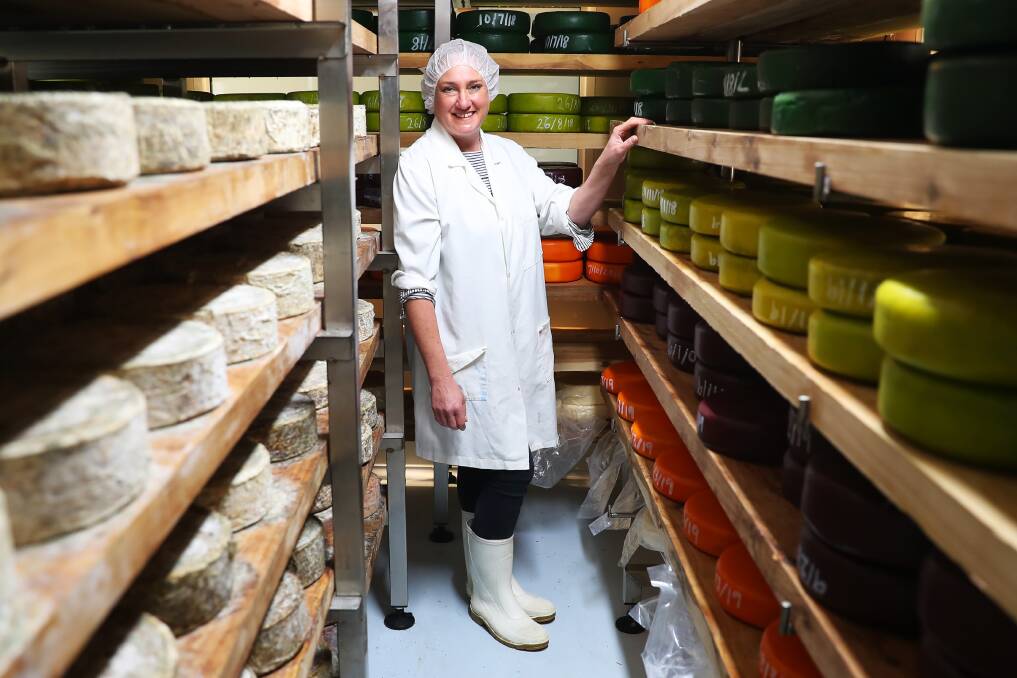From Thomastown to Your Table: The Quality of Floridia Cheese Melbourne
From Thomastown to Your Table: The Quality of Floridia Cheese Melbourne
Blog Article
Opening the Tricks of Artisanal Cheese Making: A Detailed DIY Overview
In the realm of culinary craftsmanship, artisanal cheese making stands as a testament to the delicate equilibrium in between practice and technology. As we get started on this journey to demystify the art of producing charming cheeses, we are faced with a tapestry of secrets and skills waiting to be untangled.
Picking the Right Milk
When embarking on the trip of artisanal cheese making, the option of milk plays an essential function in establishing the top quality and attributes of the final item. The type of milk picked impacts the taste, structure, and generally profile of the cheese.
When picking milk for cheese making, it is crucial to think about the fat web content. Higher fat material in milk can lead to a creamier and richer cheese, while reduced fat material might cause a drier and stronger texture. In addition, the source of the milk, whether from cows, goats, lamb, or buffalo, adds distinctive flavors and features to the cheese (Cheese Makers Melbourne). Each kind of milk brings its own nuances, enabling for a wide variety of cheese selections to be crafted based on the selected milk. Ultimately, the choice of milk is a basic decision that establishes the structure for a successful artisanal cheese-making undertaking.
Culturing and Coagulating
To start the cheese-making procedure, the critical actions of culturing and coagulating have to be carefully performed to change milk right into curds and whey. Culturing includes introducing helpful microorganisms to the milk, which then starts the fermentation procedure. These bacteria transform lactose (milk sugar) right into lactic acid, producing the acidic environment needed for coagulation. The type of society utilized can substantially influence the flavor, appearance, and ripening of the last cheese item.

The timing and temperature level control throughout culturing and coagulation are important aspects that influence the last outcome of celebrity. Appropriate execution of these actions is vital to ensure the wanted structure, taste, and consistency of the artisanal cheese being generated.
Draining and Pushing Curds
After the milk proteins have actually coagulated and the curds have been reduced to launch whey, the next critical step in artisanal cheese making includes draining pipes and pushing the curds to achieve the wanted texture and consistency of the last cheese item. The time for draining can vary depending on the kind of cheese being made and the wanted moisture material.
As soon as the curds have completely drained, the next step is pushing. Pressing assists eliminate any type of remaining whey and compacts the curds to develop a strong cheese wheel. Pressing can be done utilizing specialized cheese presses that apply constant and mild stress over an amount of time. The period and stress applied throughout pressing will influence the last texture of the cheese, from soft and creamy to tough and firm. Appropriate pressing and draining are vital steps that considerably impact the top quality and features of the artisanal cheese being produced.
Aging and Flavoring Techniques
Carrying out precise aging and flavor methods is pivotal in enhancing the depth and intricacy of artisanal cheeses, elevating their taste accounts to elegant Home Page degrees of refinement and class. Aging plays a crucial duty in establishing the unique flavors and textures that differentiate artisanal cheeses.
Flavoring strategies also add significantly to the final taste of artisanal cheeses. Cheesemakers might select to introduce additional tastes by incorporating active ingredients such as herbs, flavors, and even fruits into celebrity during the manufacturing procedure. Additionally, some cheeses are washed or massaged with various liquids, such as brine or alcohol, to improve their textures and flavors.
Wrapping and Keeping Cheeses

Verdict
In final thought, understanding the art of artisanal cheese making involves carefully choosing the appropriate milk, adhering to specific culturing and coagulating see this processes, draining pipes and pressing curds successfully, and utilizing different aging and flavor methods. By adhering to these actions vigilantly and with attention to detail, you can develop your own tasty and one-of-a-kind cheeses at home. Keep in mind to cover and store your cheeses correctly to make sure optimal flavor and appearance development. Pleased cheese making!
Each type of milk brings its own nuances, enabling for a large array of cheese varieties to be crafted based on the selected milk.After the milk proteins have coagulated and the curds have been cut to release whey, the next vital action in artisanal cheese making involves draining and pressing the curds to achieve the desired appearance and consistency of the last cheese product. A lot of cheeses need to be wrapped in wax paper or cheese paper to permit them to take a breath while shielding them from drying out. For cheeses that need to proceed aging, such as bloomy peels or cleaned skins, guarantee they are saved in an amazing environment like a cheese cave or a refrigerator established to the proper temperature. By paying interest to the wrapping and storage of artisanal cheeses, cheese manufacturers and fanatics can maintain the honesty of these delicacies and fully appreciate their intricate flavors.
Report this page